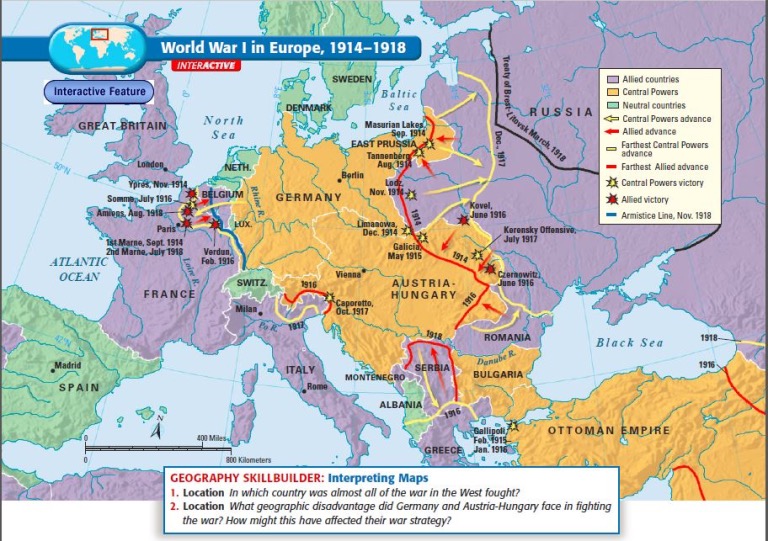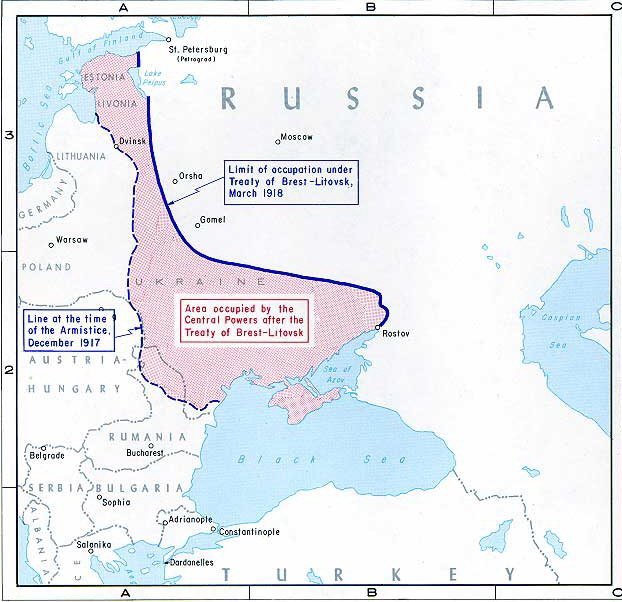The Eastern Front pitted Russia against Austria Hungary and German forces. In the early months of the war, Russia made substantial gains against the outdated Austrio-Hungarian military, as Germany focused on the Western Front. "The Germans and their Austrian allies are at first defeated as much by the mountainous terrain and frigid weather as by the prowess of the Russian army (Shuster, Mike "Russia Faces 'Great Disaster' on Eastern Front)"
Conditions changed though in April and May of 1915, as winter eased and Germany infused the Eastern Front with soldiers and ammunitions. Much like the Austria Hungarian military the Russian military infrastructure was out of date. German railroads and communication networks were far superior, setting up a mismatch on the Eastern Front.
By the end of 1915 the Eastern Front spanned over 1,000 miles from the Baltic Sea to the Black Sea. In 1916 the Russians attempted a counter offensive amongst successes by the German inclusion in the Eastern Front. The counter-offensive was a huge failure for the Russians due to their outdated military and industrial system. The losses resulted in enormous casualites and collapsing morale. By 1917 the economic costs and failure of the June offensive led to an overthrow of the Russian monarchy.


